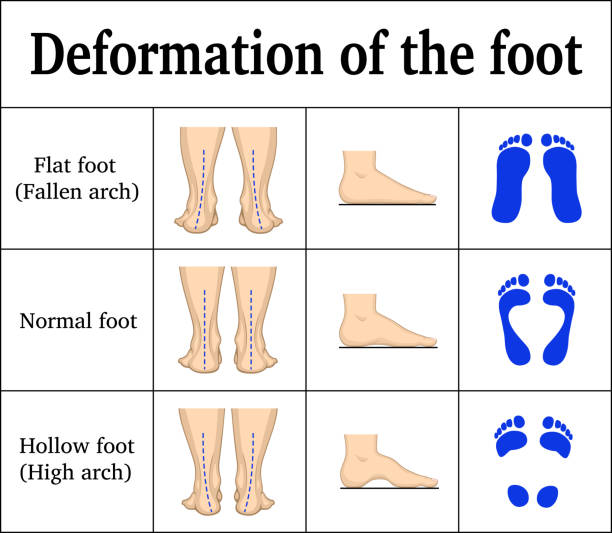
How to choosing running shoes Based on Your Running Style
Share
Choosing running shoes is more than just picking a stylish pair; it's about selecting footwear that aligns with your running style and needs. This guide will walk you through how to choose running shoes based on critical factors such as terrain, distance, and foot type.
How to Choosing Running Shoes Based on Your Running Style
Finding the perfect pair of running shoes is crucial for comfort, performance, and injury prevention. The key to successful running lies in choosing running shoes that align with your unique running style and foot mechanics. This guide will walk you through the essential factors to consider, ensuring you step out with confidence on every run. Forget generic advice; it’s all about understanding how your body moves and matching it with the right footwear.
How to Choosing Running Shoes: Understand Your Foot Strike and Pronation
When you're choosing running shoes, understanding your foot's natural motion is paramount. This primarily involves identifying your pronation type – how your foot rolls inward during the gait cycle. There are three main types:
- Neutral Pronation: Your foot lands on the outside of the heel and rolls slightly inward to absorb shock. Runners with neutral pronation can often wear neutral shoes, which prioritize cushioning.

- Overpronation: Your foot rolls inward excessively, often leading to issues like shin splints or plantar fasciitis. For overpronators, stability or motion control shoes are ideal for choosing running shoes, providing support to prevent excessive inward rolling.

- Supination (Underpronation): Your foot doesn't roll inward enough, putting extra stress on the outer edge of the foot.
- Supinators typically benefit from neutral shoes with ample cushioning to help absorb impact.

Knowing your pronation type is the first step in choosing running shoes that support your body correctly. You can often determine this by looking at the wear pattern on your old shoes or getting a gait analysis at a specialized running store. Beyond pronation, consider the terrain you run on—road, trail, or track—as this significantly impacts your choice of outsole and upper materials. Proper choosing running shoes means tailoring them to your specific needs.
Understand Your Running Terrain
One of the first steps in choosing running shoes is understanding where you'll be running most often. Different terrains require different types of shoes for optimal performance and comfort.
Road Running Shoes
Road running shoes are designed for smooth surfaces like pavements and tarmac. They offer excellent cushioning and shock absorption, making them ideal for runners who focus on road races or daily city runs. If you're looking for stability, consider checking out Wave Inspire 21 Running Shoes.
Trail Running Shoes
For those who prefer off-road adventures, trail running shoes provide superior grip and traction. These shoes are built to handle uneven terrain, rocks, mud, and roots. Remember, using road running shoes on trails can lead to damage and reduced performance.
Selecting Based on Distance
The distance you plan to cover also plays a crucial role in choosing running shoes. Longer distances demand more cushioning and support, while shorter runs might benefit from lightweight and flexible options.
Long-Distance Running Shoes
For marathons or long training sessions, prioritize cushioned shoes that reduce impact on your joints. A good pair of running shoes ensures comfort and reduces fatigue over time.
Short-Distance Running Shoes
If you're focusing on quick sprints or short runs, lightweight shoes may be better suited. These shoes enhance speed and agility without compromising support.
Analyze Your Foot Type
Your foot type significantly influences the type of running shoe you should select. Understanding whether you overpronate, underpronate, or have a neutral gait helps in finding the right fit.
Neutral Runners
Neutral runners benefit from shoes that offer balanced cushioning and support. Consider trying Women's Wave Inspire 20 Running Shoe if you fall into this category.
Overpronators
Overpronators need stability shoes that prevent excessive inward rolling of the foot. Stability shoes come with features like motion control to correct your gait and reduce injury risk.
Consider Brand and Fit
While brand names aren't everything, they do matter when it comes to ensuring quality and durability. Always prioritize comfort and fit over fashion trends.
Finding the Right Fit
Ensure there's enough room in the toe box and that the heel fits snugly without slipping. Test multiple pairs at a specialty store or online retailer with a generous return policy. Don't forget to bring your usual running socks for accurate sizing.
Try Before You Buy
Before committing, try out Men Wave Inspire 20 Running Shoe during a short jog. Feeling comfortable from the start is a strong indicator of a good match.
Conclusion: Putting It All Together
Selecting the right running shoes involves considering several factors, including terrain, distance, foot type, and personal preference. By analyzing these aspects, you can find a pair that enhances your running experience and minimizes injury risks. Remember, investing in a good pair of running shoes is an investment in your health and performance.
Tips for Success
To make the process smoother, visit stores offering gait analysis services. These professionals can assess your stride and recommend suitable options. Additionally, don't hesitate to ask questions and gather advice from experienced runners or experts.
Frequently Asked Questions (FAQ)
Here are some common questions about choosing running shoes:
How Often Should I Replace My Running Shoes?
Most experts recommend replacing running shoes every 300 to 500 miles, depending on usage and wear patterns.
Can I Use Trail Shoes for Road Running?
While possible, trail shoes may not provide adequate cushioning for prolonged road use. Stick to designated road running shoes for smoother surfaces.
What Is Gait Analysis?
Gait analysis evaluates your running style and foot movement to determine the best shoe type for your needs. Many specialty stores offer this service free of charge.
